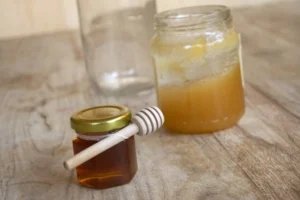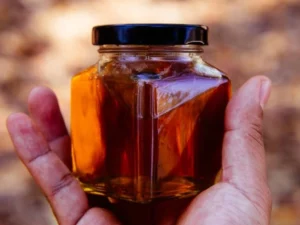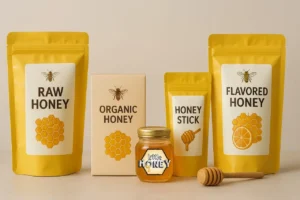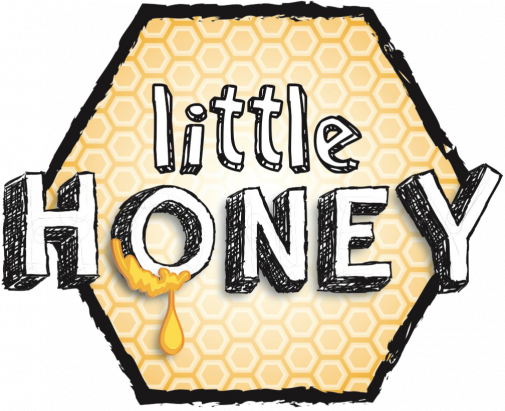
Sidr Honey Straws Specialist Singapore
Is Sidr Honey Power Greater Than SAL and Jarrah Honey?
Have you ever wondered what makes some honeys stand out from the rest? With so many unique honey types touted as natural remedies, it can get pretty confusing. Among the stars of the medicinal honey world are Sidr honey power, SAL honey, and Jarrah honey—all known for their impressive healing properties and health benefits. But is Sidr honey truly more powerful than SAL and Jarrah honey? Let’s dive into this sweet showdown!
What Makes Medicinal Honeys So Special?
First off, not all honeys are created equal. Raw honey from different flowers carries distinct compounds that contribute to its antibacterial properties, antioxidants, and overall health benefits. These natural honeys act like little health warriors, helping with everything from soothing sore throats to wound healing.
By the way, you might have heard of Manuka honey, but today, we’re zooming in on Sidr, SAL, and Jarrah honey—three honeys that pack a punch in their own right.
Overview of Sidr Honey
Origin and Production
Sidr honey comes from the nectar of the Sidr tree, mainly found in Yemen and parts of the Middle East. These trees are ancient, and the honey harvested from them is considered a rare, precious natural honey due to the tree’s limited flowering season.
Key Properties and Health Benefits
What sets Sidr honey apart are its robust antibacterial properties and natural compounds that support immunity and digestion. It’s often praised for its ability to speed up wound healing and fight infections, making it a staple in many households seeking natural remedies.
The Health Benefits of Sidr Honey
Unique Compounds and Potency
Sidr honey is loaded with potent antioxidants and bioactive compounds, giving it a strong antibacterial activity that can rival even some medical-grade honeys. Many users report a richer taste and thicker texture compared to other honeys, adding to its allure as a premium natural sweetener.
Overview of SAL Honey
Origin and Source
SAL honey is primarily sourced from the SAL tree (Shorea robusta), which grows in the Indian subcontinent. This honey is seasonal and prized for its distinctive flavor and medicinal qualities.

Health Benefits and Unique Characteristics
SAL honey boasts remarkable healing properties, especially for respiratory ailments and skin conditions. Its antibacterial properties are strong, although slightly different from Sidr’s due to variations in plant chemistry.
Comparison of Antibacterial Strength
When comparing SAL honey benefits to Sidr’s, SAL is often highlighted for its potent antioxidant profile, which supports general wellness and slows aging, but Sidr may edge out in pure antibacterial power.
Overview of Jarrah Honey
Geographic Source and Production
Hailing from Western Australia, Jarrah honey comes from the Jarrah tree’s nectar. Known for its distinctive amber color, this honey is popular for its medicinal uses.

Distinctive Medicinal Qualities
Jarrah honey is famous for its slow crystallization and strong antibacterial activity, making it ideal for wound care and immune support. It’s often recommended for people with allergies or skin issues.
Known Benefits for Healing and Immunity
The Jarrah honey benefits extend beyond skin healing; it also contains high antioxidant levels, which protect cells from damage and promote overall health.
Comparing Sidr, SAL, and Jarrah Honeys
|
Feature |
Sidr Honey | SAL Honey |
Jarrah Honey |
|
Antibacterial Activity |
Very high | High | Very high |
|
Antioxidant Content |
High |
Very high |
High |
| Healing Properties | Strong | Strong |
Strong |
|
Taste |
Rich, caramel-like | Floral, mild | Earthy, woody |
| Texture | Thick, creamy | Smooth |
Slightly grainy |
As you can see, each honey shines in different areas. The honey comparison reveals that while Sidr honey often boasts the strongest antibacterial properties, SAL honey holds its own with impressive antioxidant levels, and Jarrah offers unique benefits for healing and immunity.
Which Honey Is More Powerful?
Here’s the kicker: “powerful” depends on what you’re looking for. Are you after the best natural sweetener that supports digestion? Or maybe a honey with the highest antibacterial activity for healing wounds?
Context-Dependent “Power”
- For antibacterial uses, Sidr and Jarrah are frontrunners.
- If antioxidants are your priority, SAL honey might be your best bet.
- For versatile healing and immune support, all three honeys offer something valuable.
Scientific Studies and Evidence
Research shows all three honeys outperform regular raw honey in honey antibacterial activity and antioxidant levels, but Sidr honey frequently ranks higher in studies focused on antibacterial potency.
Practical Recommendations
If you want a multi-purpose medicinal honey, Sidr is a top choice. But trying SAL or Jarrah honey offers unique benefits worth exploring, especially if you want to diversify your natural remedies.
Conclusion
In the end, Sidr, SAL, and Jarrah honeys each hold a unique spot in the world of medicinal honey. Sidr honey stands out for its potent antibacterial properties and rich history as a healing agent, making it a favorite for many health-conscious users in Singapore and beyond.
But SAL and Jarrah honeys have their own magic too, especially when it comes to antioxidants and skin healing. So, the real answer is: choose based on your personal health goals and taste preferences.
By the way, if you want to experience the sweet power of Sidr honey, Little Honey offers premium, pure Sidr honey right here in Singapore, a perfect natural boost for your wellness journey!
FAQ
Q: Is Sidr honey better for wound healing than Jarrah?
A: Both are excellent, but Sidr often has stronger antibacterial effects, making it very effective.
Q: Can SAL honey help with aging?
A: Yes! SAL honey’s antioxidants support skin health and reduce signs of aging.
Q: Which honey tastes the sweetest?
A: Sidr honey has a rich, caramel-like sweetness that many love.
Have you tried Sidr, SAL, or Jarrah honey before? Drop a comment below and share your experience! And don’t forget to check out Little Honey for authentic Sidr honey in Singapore.
Share this post :
Categories
Latest Post


Top 6 Reasons Why You Should Choose Sidr Honey Singapore

The Amazing Benefits of Milk and Honey for Skin & Health





